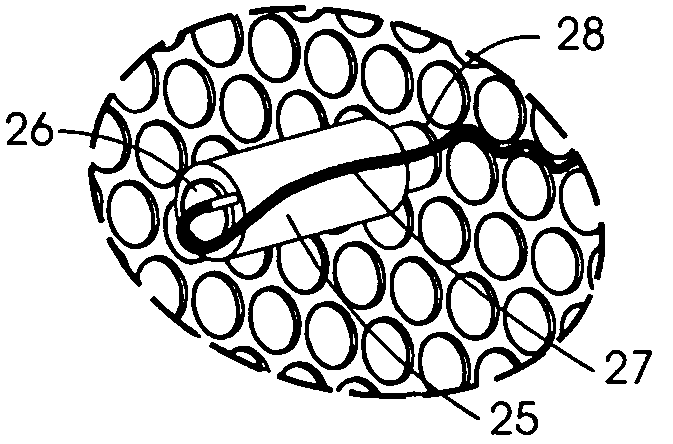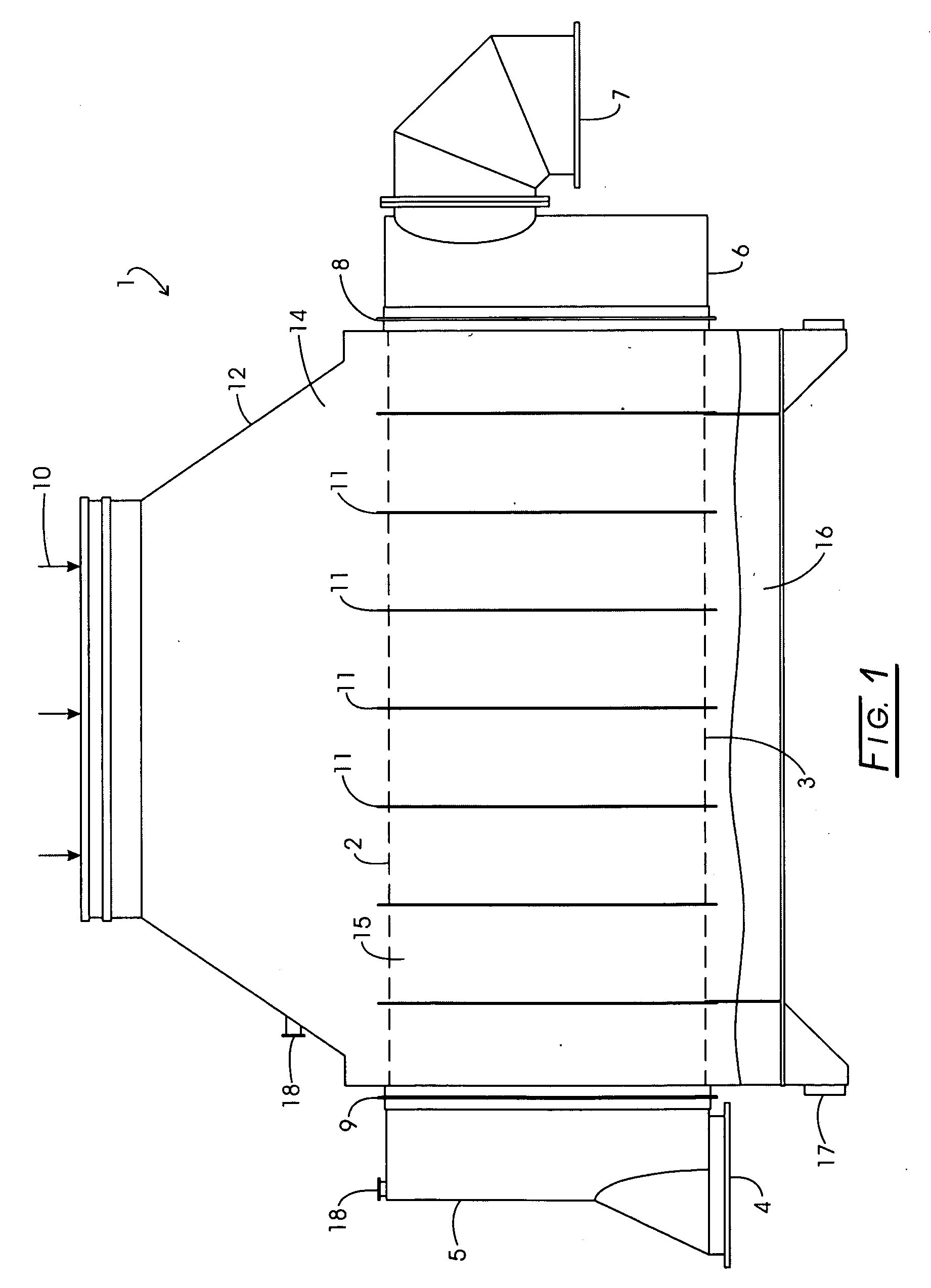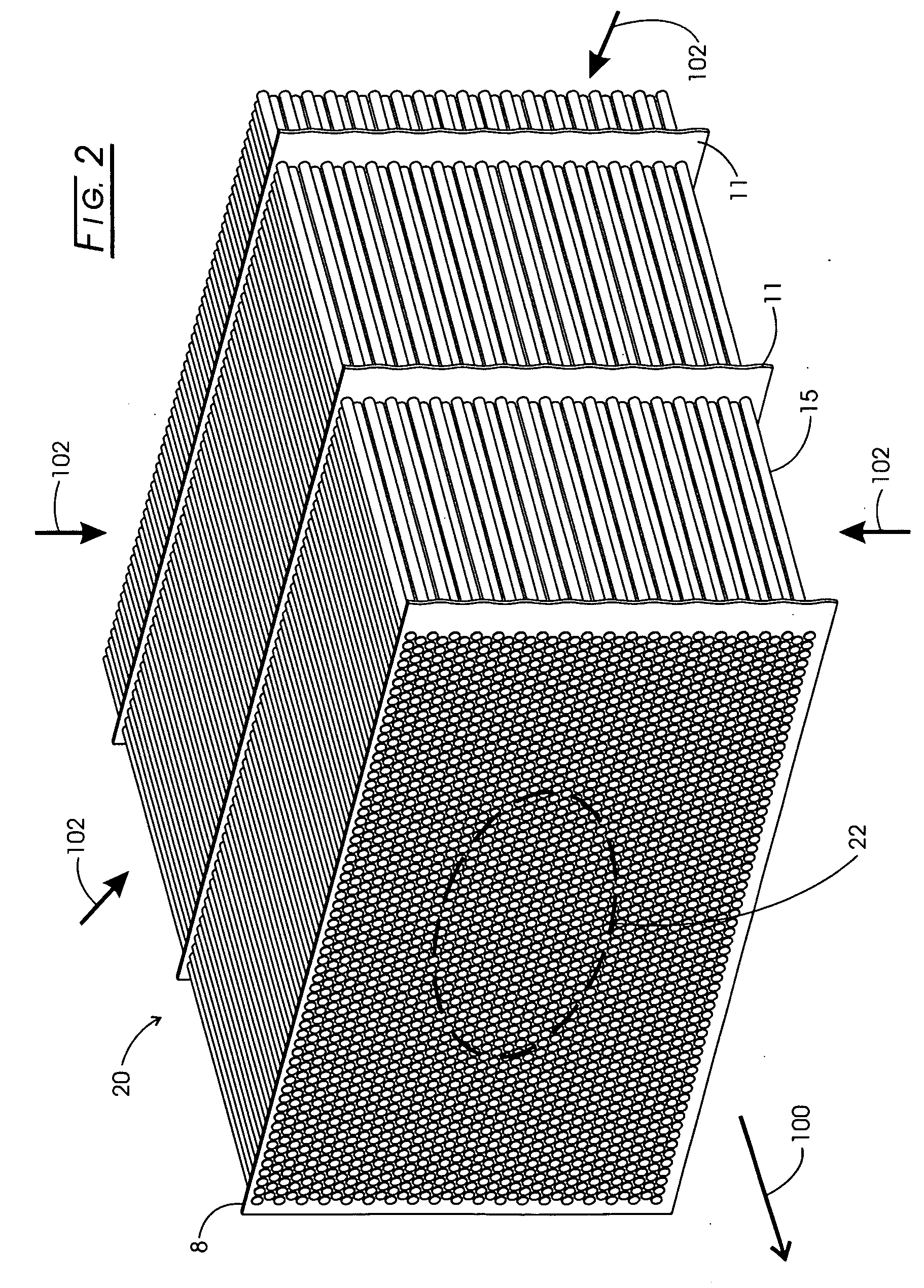Tube fouling monitor
a technology of fouling monitor and tube, which is applied in the field of heat exchangers, can solve the problems interfering with heat transfer coefficient, and achieve the effects of reducing heat flow, minimizing sensor variations, and accurate average measurement of fouling signals
- Summary
- Abstract
- Description
- Claims
- Application Information
AI Technical Summary
Benefits of technology
Problems solved by technology
Method used
Image
Examples
Embodiment Construction
A. Purpose
[0041]The disclosed Tube Fouling Monitor (TFM) is a unique device used to monitor fluid properties such as flow rate and exit temperature in several selected tubes to calculate tube fouling on the inner and outer wall of the monitored tube as well as monitor in situ the effect of fouling on the clean heat transfer coefficient of the TFM. The ability to monitor this fouling is valuable in maintaining some heat exchanger systems for optimized performance, to identify the cause of high dissolved and deleterious gases in condensate and the need to perform retrofit modifications of the heat exchanger configuration.
[0042]For optimized condenser performance, tubes should be as clean as possible and the condenser should operate at below its original design pressure with measured dissolved oxygen below 5 ppb, show relatively uniform outlet circulating water temperature rise from all tubes in the tube bundle and be maintained with air in-leakage below the design capacity of the exha...
PUM
 Login to View More
Login to View More Abstract
Description
Claims
Application Information
 Login to View More
Login to View More - R&D
- Intellectual Property
- Life Sciences
- Materials
- Tech Scout
- Unparalleled Data Quality
- Higher Quality Content
- 60% Fewer Hallucinations
Browse by: Latest US Patents, China's latest patents, Technical Efficacy Thesaurus, Application Domain, Technology Topic, Popular Technical Reports.
© 2025 PatSnap. All rights reserved.Legal|Privacy policy|Modern Slavery Act Transparency Statement|Sitemap|About US| Contact US: help@patsnap.com



